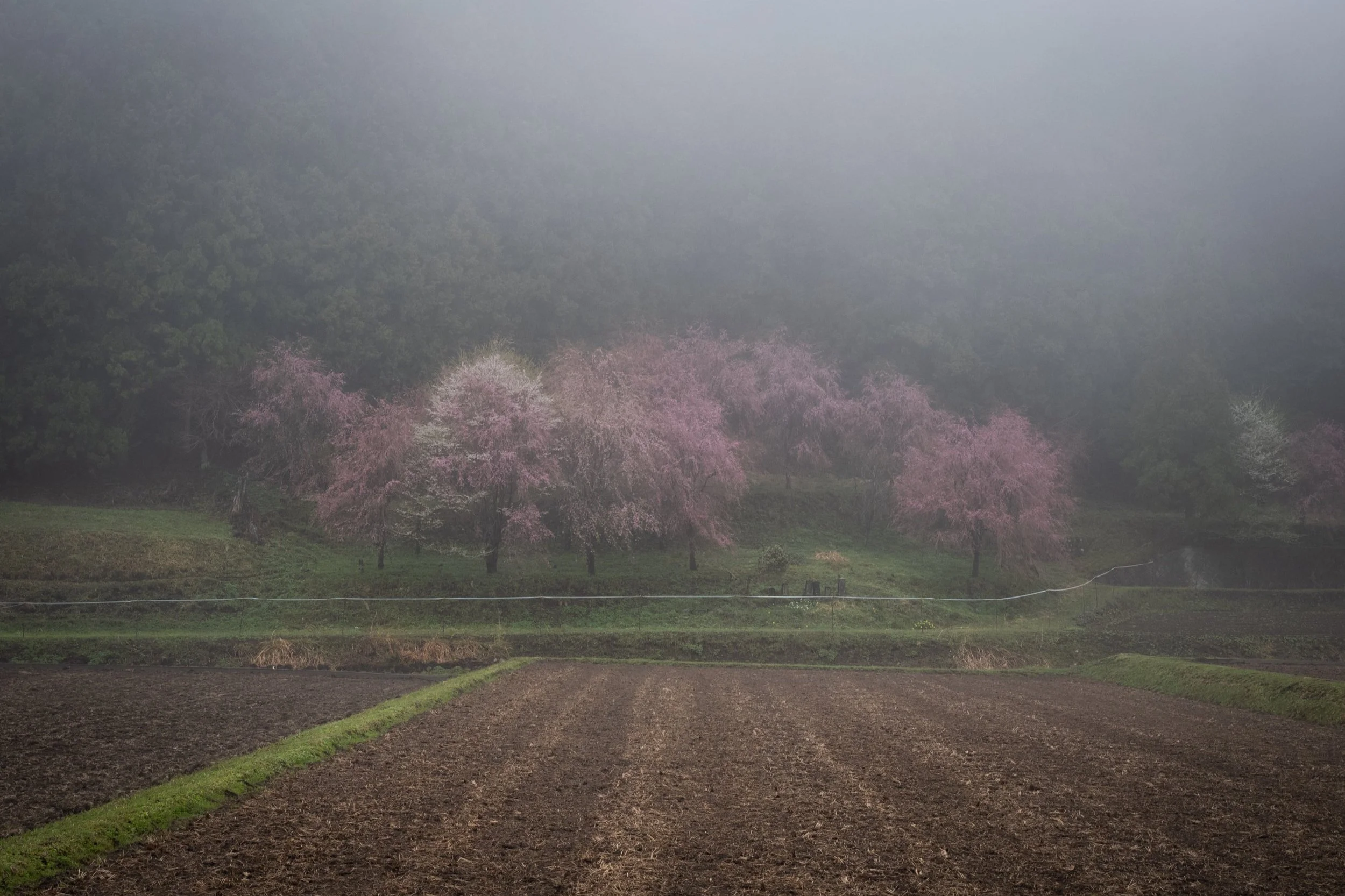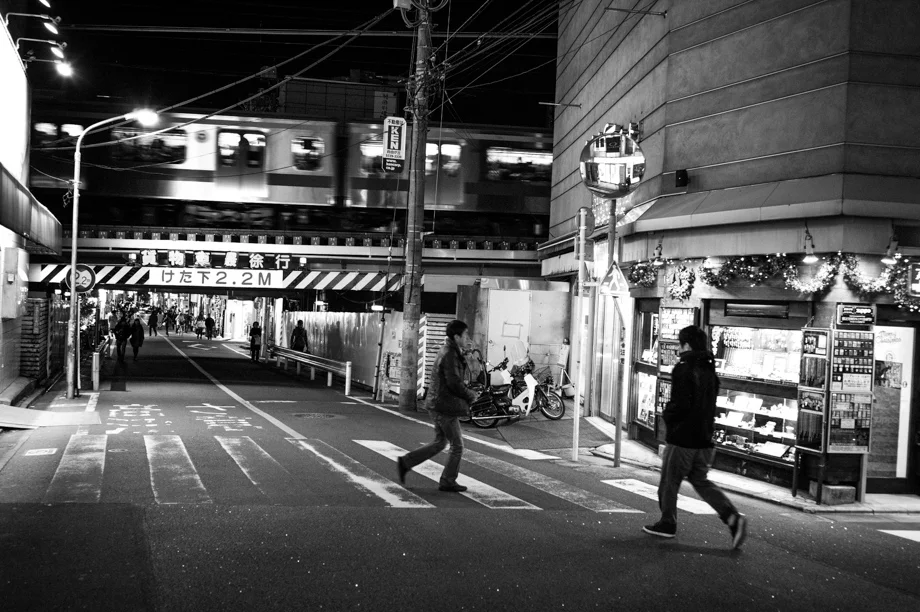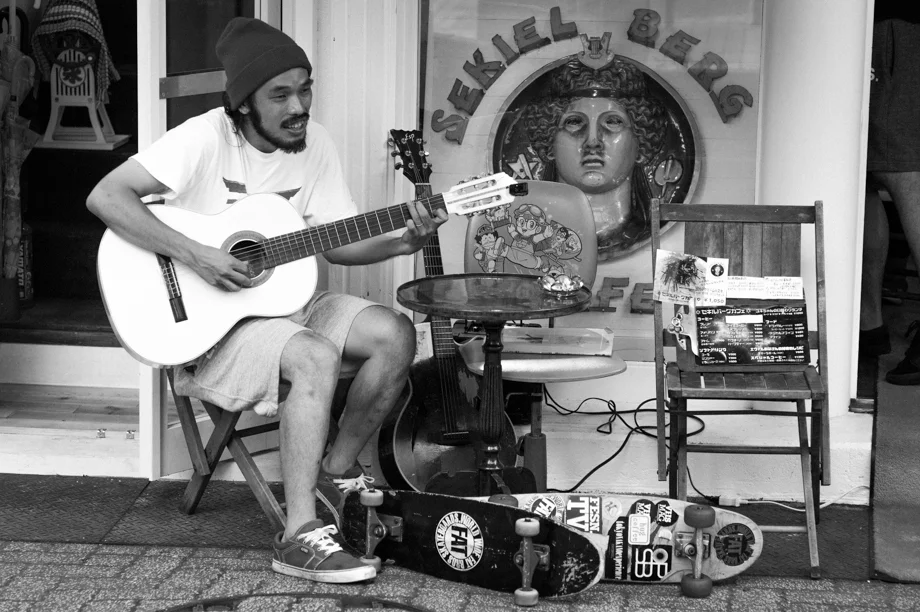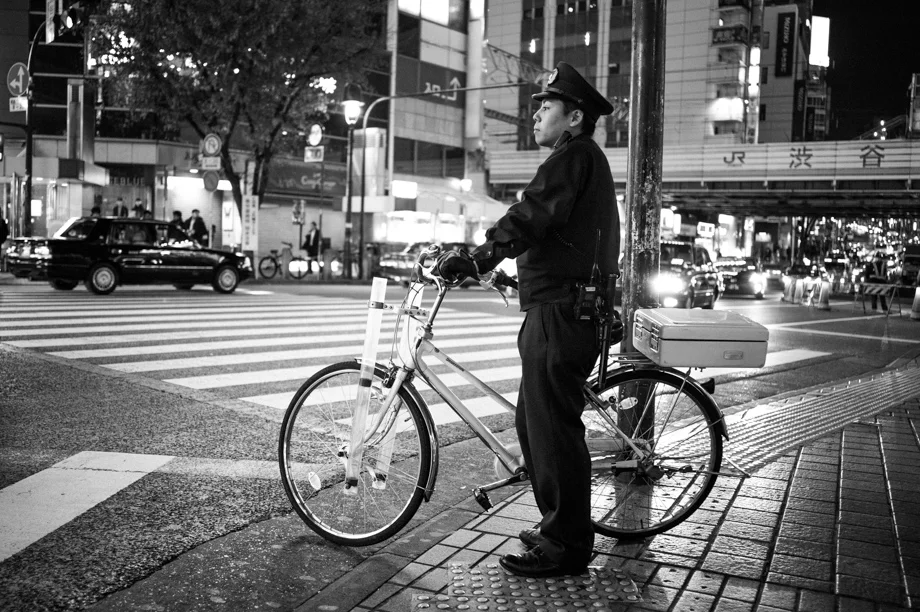Setting the stage
I often get asked if I give photography lessons. I really enjoy shooting and sharing what I know but I honestly don't have the time to give lessons. I do often go shooting with people when they are in town and will give them tips. If a co-worker is getting into photography and wants some tips I am always happy to help them. I think we all have this responsibility as part of the photography community. I have been asked about a lot of the basics such as ISO, shutter Speed and aperture so many times on my blog. There is no right or wrong answer. This is just what works for me. Hopefully it works for you as well.
When I got out with people to shoot I assume that have a working knowledge of the basics. I try to focus on how I approach my photography, taking photos of people on the street or finding an interesting scene to shoot.
Here is a photo I took in Jiyugaoka. To get this shot right I needed to make sure I had the right mix of aperture, shutter speed and ISO to get the desired look I wanted to achieve. When you are getting started in photography the choice can seem limitless. Firstly it needed to be properly exposed. Then I needed to decide what effect I am looking for. Was I looking to isolate a subject and make it stand out separately from its background? Was I looking to freeze something in its tracks or imply a bit of motion to the photography but not freezing the subject completely?
In this photo I knew a train was coming as I could hear it. I wanted to not freeze it completely but slow it down enough that you knew it was a train and not a blur of light. I also wanted the people to not be completely sharp also implying some motion to the photograph. I needed to make sure my aperture was bit enough to capture the detail I wanted and the shutter speed was slow enough to imply the motion I wanted but not so slow that camera shake was apparent in the picture as I wasn't using a tripod.
When you first start off in photography being able to quickly combine all of these things at once can be overwhelming. After a while this all becomes second nature. Those who shoot with me know I am often presetting a lot of these while I am walking and thinking about the shot I want to take. This way when I come upon a subject I am ready to take the shot I want and I'm not fumbling around with settings.
Today's configuration: Leica M Monochrom with a Summicron 28mm f/2.0
I have a coworker starting in photography and he was asking for advice on how to use his camera. When starting out you just need some quick wins to help you build confidence and continue to apply what you learn.
You need to transition from:
'snap shot' - a photograph you take
to a 'picture' - a photograph you create.
This can be overwhelming. So much so that you don't get the shots you want and get frustrated and consider onto a new hobby. I know this happened to me when I first started out. Every book I read was 500 pages with more information that I could possibly need. I wish I had an easier start to photography.
To help get started it is easiest to remove as many variables as possible and focus on creating the picture. Here is a recipe I give people to try to help them along:
1. Find a scene that will have a lot of repetition so you can get a lot of chances to practice the shot. Good examples are train doors opening, taxi stands, bus stops, shopping area, etc. Think constant flow of people and repetitive actions as a place to start.
2. Set your camera on aperture priority and get the exposure you are looking for. Once you have the right exposure switch your camera to manual and set your camera to that settings. Now you don't have to worry about exposure, metering variations, etc.
3. Now find your focus point and switch your camera to manual focus (If you have one of them fancy cameras with that automatic focusing function. Mine doesn't have that so this isn't an issue for me.) and focus in on your focal point.
4. Wait for the scene to assemble itself such as a train passing above and people crossing the walk.
5. Take your photo. Repeat. Many times.
Legendary photographer Jay Maisel asked the group in my workshop how many times does it take them to get the shot they want. Most of us proudly said '2 or 3' to which Jay replied 'Wow I must suck as a photographer. It typically takes me 400-500.' His message was to work the shot. Pictures don't just happen. You need to work . You need to work hard.
When you are first starting out it is really frustrating to come home after shooting and not have 'the image' you wanted. I remember when I started out I was walking really fast and taking as many photos as I could. My goal was to come home with a portfolio of images to impress the world with. SLOW DOWN. Slow way down. Find a scene and work it as described above to get the shot you want. If you come home with one good shot be thankful.
Once you have a lot of experience you will be able to get shots like I did above as you walk by as you will see the scene unfolding, know the settings you need and can capture the shot. It will become muscle memory for you.
My coworker wanted some advice so after work we went for a around Tokyo Station to see what we could find. This was a perfect scene as I knew someone would stop every few minutes to look at the information sign.
Here are a few others we captured...
This scene was the opposite in that I had to wait until no one was there and one person walked right in the center...
Public sleeping...
Another cool vantage point with the lines on the roof leading your eyes forward but needed to wait for something to enter the scene...
Thanks for stopping by today...

















